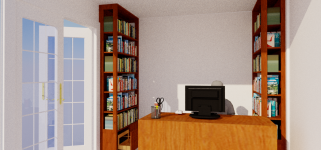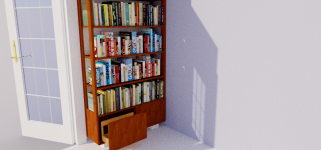Hello,
Just bidding a custom bookcase and wondering if anyone see's a red flag in this design before I go forward with it to the client.
The sides will be made of solid 15/16" Walnut. The top, shelves (adjustable with shelf pins, not fixed) and deck will be made of 3/4" Walnut veneer core plywood. There will be stretchers/nailers (1/2" Baltic Birch) spanning the back behind the 1/4" plywood back. These will be pocket screwed and Domino'd into the sides.
Assuming proper technique and consistency of materials, If I Domino the sides (Walnut) to the top (plywood) will that joint be stable enough to trust for 20-30+ years?
Just bidding a custom bookcase and wondering if anyone see's a red flag in this design before I go forward with it to the client.
The sides will be made of solid 15/16" Walnut. The top, shelves (adjustable with shelf pins, not fixed) and deck will be made of 3/4" Walnut veneer core plywood. There will be stretchers/nailers (1/2" Baltic Birch) spanning the back behind the 1/4" plywood back. These will be pocket screwed and Domino'd into the sides.
Assuming proper technique and consistency of materials, If I Domino the sides (Walnut) to the top (plywood) will that joint be stable enough to trust for 20-30+ years?


